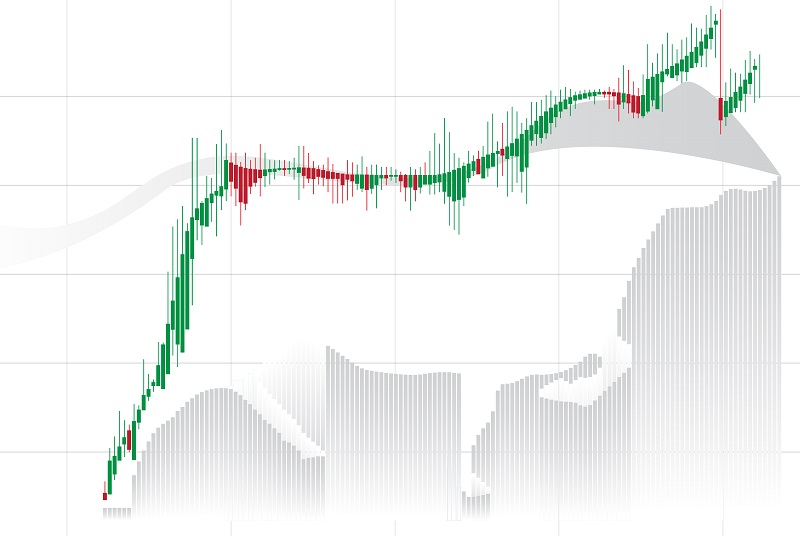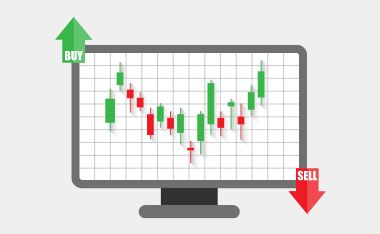Trading a Forex Bullish Market

Trading a Bullish Forex Market is a skill that all consistently profitable forex traders possess.
Forex trading is a dynamic market where trends can rapidly shift from bearish to bullish.
Bull markets, characterised by an upward price trend, present unique opportunities for forex traders.
With the right strategies and mindset, traders can navigate bullish markets successfully and capitalise on profitable opportunities.
This article will explore practical strategies for thriving in forex trading bull markets, helping traders adapt to changing market conditions and achieve their trading goals.
Understanding Forex Trading Bull Markets
Before looking into strategies, it is crucial to understand what constitutes a bull market in forex trading.
A bull market refers to a prolonged period of rising prices and positive market sentiment.
It is characterised by higher highs and higher lows, with buyers dominating the market and pushing prices upward.
Bull markets can be triggered by factors such as positive economic indicators, improving market sentiment, or increased investor confidence.
During these market conditions, traders often experience increased volatility, extended upward trends, and an overall optimistic outlook.
Trend Following Approach
One effective strategy for thriving in forex trading bull markets is trend following.
This approach involves identifying and trading in the direction of the prevailing bullish trend.
By recognising higher and lower highs, traders can enter long positions to capitalise on upward price movements.
The Strongest Trend Following Trade Entry Points Occur when price finds a strong price level of support in an up-trending market.
At this point, where all of the bearish retracement momentum has ended, and the prevailing Bullish Market Pressure has built, you will often find your strongest Long Trade entry points with the most significant potential for maximum profit.
Trend-following strategies often employ technical indicators, such as moving averages, to confirm and validate the bullish trend.
The goal is to ride the trend and stay in the market as long as the upward momentum persists.
However, it is essential to implement risk management techniques, such as setting appropriate stop-losses, to protect against potential reversals or unexpected market fluctuations.
Breakout Trading Approach
In bull markets, price breakouts and upward momentum are common.
Breakout trading is a strategy that focuses on identifying key resistance levels that, when breached, can trigger significant upward movements.
Traders utilising this strategy aim to enter long positions when prices break above critical resistance levels, expecting continuing upward momentum.
To implement breakout trading effectively, traders often use technical tools such as support and resistance levels, trend lines, and chart patterns to identify potential breakout points.
Additionally, confirmation from other indicators or momentum oscillators can enhance the probability of a successful breakout trade.
Risk Management
Effective risk management is crucial for any trading strategy and remains essential in bull markets.
During heightened volatility and market optimism, protecting capital and managing risk diligently is vital.
Traders should consider implementing the following risk management techniques:
Proper Position Sizing
In bull markets, it is advisable to allocate appropriate position sizes to account for increased volatility and potential losses.
By managing the allocation of trading capital for each trade, traders can limit their exposure and minimise the impact of adverse market movements.
Setting Stop-Losses
Using stop-losses is a vital risk management tool in bull markets.
These orders trigger an exit from a trade if prices move against the desired direction beyond a predetermined level.
By setting appropriate stop-loss levels, traders can limit potential losses and protect their capital.
Diversification
Diversification is another risk management strategy that can help traders thrive in bull markets.
By spreading trading capital across different currency pairs or even other asset classes, traders can reduce the concentration of risk.
Diversification allows for exposure to multiple opportunities and can help offset losses in specific trades or currencies.
Bullish Forex Trading Chart Patterns
Capitalising on Technical Signals
Chart patterns play a crucial role in technical analysis as they provide valuable insights into a currency pair’s potential future price movements.
Traders often look for bullish chart patterns to identify opportunities for buying or entering long positions.
We will explore three popular bullish chart patterns: the Inverted Head and Shoulders, Falling Wedge, and Ascending Triangle patterns.
Inverted Head and Shoulders Pattern: Reversal Signal for Upside Breakout
The Inverted Head and Shoulders pattern is a bullish reversal formation that signals a potential upside breakout.
It consists of three distinct components: a left shoulder, a head, and a right shoulder, with the head forming the central and highest point.
This pattern indicates a shift from a bearish trend to a bullish trend.
To recognise the Inverted Head and Shoulders pattern, traders look for a series of lower lows and lower highs followed by a low (left shoulder), a lower low (head), and another higher low (right shoulder).
The neckline, which connects the high points between the two shoulders, acts as a significant resistance level.
A valid confirmation of the Inverted Head and Shoulders pattern occurs when the price breaks above the neckline.
This breakout is often accompanied by increased trading volume, indicating a strong shift in market sentiment.
Traders typically enter long positions when the price surpasses the neckline, setting stop-loss orders below the right shoulder and targeting a profit based on the pattern’s projected height.
Falling Wedge Pattern: Potential Bullish Reversal
The Falling Wedge pattern is a bullish continuation or reversal formation that signals a potential uptrend.
It is characterised by converging trendlines that slope downward, with the lower trendline being steeper than the upper one.
This pattern indicates a gradual decrease in selling pressure and a potential shift towards buying pressure.
To identify a Falling Wedge pattern, traders look for a series of lower highs and lower lows that form the converging trendlines.
The price consolidates within this wedge-shaped pattern, creating a narrowing range.
The breakout typically occurs when the price breaks above the upper trendline, signalling a potential bullish reversal.
When trading the Falling Wedge pattern, traders often enter long positions after the breakout, placing stop-loss orders below the pattern’s lowest low.
Profit targets can be set based on the pattern’s projected height or by identifying resistance levels that may act as future price targets.
Ascending Triangle Pattern: Bullish Continuation Pattern
The Ascending Triangle pattern is a bullish continuation formation that signals the potential continuation of an existing uptrend.
A horizontal resistance line and a rising trendline characterise it.
This pattern indicates that buyers are willing to enter the market at higher prices, reflecting increasing buying pressure.
To identify an Ascending Triangle pattern, traders look for a horizontal resistance line connecting the swing highs and a rising trend line connecting the higher lows.
The price consolidates within this triangular pattern, with the upper trendline acting as resistance.
A valid confirmation of the Ascending Triangle pattern occurs when the price breaks above the resistance line, indicating a potential bullish continuation.
Traders often enter long positions after the breakout, placing stop-loss orders below the triangle’s lower trendline.
Profit targets can be set based on the pattern’s projected height or by identifying potential resistance levels that may act as future price targets.
Bullish Forex Market Candlestick Patterns
Bullish candlestick patterns are essential tools in technical analysis that provide valuable insights into market sentiment and potential future price movements.
These patterns, formed by the open, close, high, and low prices within a specific timeframe, offer traders a visual representation of buying pressure and upward momentum in the market.
Here are three reasons why incorporating bullish candlestick patterns into your analysis is crucial for successful trading.
Identifying Trend Reversals
Bullish candlestick patterns can act as powerful indicators of trend reversals in the market.
Patterns like the Hammer, Bullish Engulfing, and Morning Star signal a potential shift from a bearish trend to a bullish one.
These patterns are characterised by a long lower shadow or a bullish candlestick engulfing the previous bearish candlestick, indicating that buyers have gained control.
By recognising these patterns, traders can position themselves ahead of trend reversals and capitalise on early entry points, improving their profit potential.
Confirming Support and Resistance Levels
Bullish candlestick patterns also help confirm the strength of support and resistance levels on price charts.
For example, the Bullish Harami and Piercing Line patterns can provide insights into potential buying opportunities near support levels.
When a bullish pattern forms near a significant support level, it suggests that buyers are stepping in, increasing the likelihood of a price reversal.
Traders can use these patterns as confirmation signals to validate their analysis and make more informed trading decisions.
Enhancing Risk-to-Reward Ratio whilst Trading a Forex Bullish Market
Incorporating bullish candlestick patterns into your analysis can help improve your risk-to-reward ratio by providing precise entry and exit points.
Patterns like the Bullish Doji Star and Bullish Three White Soldiers indicate strong buying pressure and potential upward momentum.
Traders can enter long positions when these patterns form, placing stop-loss orders below the pattern’s low or the previous swing low.
By defining risk levels more precisely, traders can maximise their potential profits and minimise losses, leading to more favourable risk-to-reward ratios.
The Double Bottom Candlestick Pattern
The double bottom candlestick pattern is a bullish reversal pattern that typically forms at the end of a downtrend.
It consists of two consecutive troughs or lows that are approximately equal, followed by a bullish reversal.
This pattern suggests that selling pressure has exhausted, and buyers are gaining control, leading to a potential trend reversal.
The first trough represents the initial support level, while the second trough indicates a retest of that level.
When the price breaks above the high between the two troughs, it confirms the pattern, signalling a buying opportunity for traders.
The double bottom pattern provides a visual representation of a shift in market sentiment, and traders often use it to identify potential entry points for long positions.
The Abandoned Baby Candlestick Pattern
The abandoned baby candlestick pattern is a powerful reversal pattern that indicates a sudden shift from a bearish to a bullish trend.
It consists of three candles: a long bearish candle, a small doji or spinning top candle with a gap on both sides, and a long bullish candle.
The doji candle represents a period of indecision, where neither buyers nor sellers have control.
The gap on both sides of the doji signifies a significant change in market sentiment, with a sudden influx of buyers overpowering the sellers.
This pattern suggests a potential trend reversal and is often considered a strong signal for traders to enter long positions or close their existing short positions.
The Bullish Railway Tracks Pattern
The bullish railway tracks pattern is a bullish continuation pattern that occurs during an uptrend. It consists of two consecutive candlesticks with similar or nearly identical opening and closing prices but different wicks or shadows.
Both candlesticks have long lower wicks and small or non-existent upper wicks.
The first candlestick is typically bearish, while the second one is bullish.
This pattern indicates that buyers are maintaining control and driving the price higher, as reflected in the consistent opening and closing prices.
The long lower wicks suggest that there have been unsuccessful attempts by sellers to push the price down.
The bullish railway tracks pattern signifies a potential continuation of the upward trend, and traders often interpret it as a signal to hold onto existing long positions or enter new ones.
The 4 Main Time-Based Bullish Forex Market Trading Strategies
There are four main types of bullish trading strategies that traders employ to take advantage of upward market movements: position trading, swing trading, day trading, and intra-day trading.
Each strategy differs in its time horizon, level of involvement, and trading approach.
Bullish Position Trading: Capitalising on Long-Term Trends
Bullish position trading is a strategy that focuses on capturing long-term trends in the forex market.
Traders employing this approach aim to identify sustained upward movements and enter positions that can be held for weeks, months, or even years.
Position traders often rely on fundamental analysis and macroeconomic factors to determine the overall market sentiment and identify potential bullish opportunities.
To succeed in bullish position trading, traders need to thoroughly understand global economic trends, monetary policies, and geopolitical factors that can impact currency values.
By conducting in-depth research and analysis, position traders can make informed decisions and identify currency pairs that exhibit strong bullish potential.
Once a bullish trend is identified, position traders enter long positions with the expectation that prices will continue to rise over the long term.
They typically set wider stop-loss orders to allow for market fluctuations and give the trade enough room to play out.
Profit targets are also set at significant levels, considering the potential for extended upward movements.
Forex Bullish Market Swing Trading: Capturing Short-Term Price Swings
Bullish swing trading involves capturing shorter-term price swings within the broader bullish trend.
Swing traders aim to identify and profit from price reversals or temporary pullbacks within the overall upward movement.
This strategy is ideal for traders who prefer a more active approach but still want to take advantage of bullish market conditions.
Swing traders use technical analysis tools such as support and resistance levels, trend lines, and oscillators to identify potential entry and exit points.
After a temporary pullback, they look for signs of a bullish reversal or a resumption of the upward trend.
Once a favourable setup is identified, swing traders enter long positions and aim to capture the price swing until the momentum fades or reaches a predetermined target.
Risk management is crucial in swing trading, as traders must be mindful of potential false breakouts or trend reversals.
As discussed earlier, stop-losses are set strategically to protect against unexpected market movements. At the same time, profit targets are determined based on the magnitude of the swing and the trader’s risk-reward ratio.
Bullish Day Trading: Exploiting Intraday Opportunities
Bullish day trading is a strategy that involves executing and closing trades within a single trading day.
Day traders take advantage of intraday price fluctuations and aim to profit from the bullish momentum during the day.
This approach requires quick decision-making, active monitoring of price movements, and the ability to execute trades efficiently.
Day traders primarily rely on technical analysis and short-term indicators to identify potential entry and exit points.
They look for patterns such as breakouts, pullbacks, or chart formations that indicate bullish opportunities within the day’s trading session.
Once a setup is identified, day traders enter long positions to capitalise on short-term price movements.
Risk management is crucial in day trading, as trades are executed and closed within a short timeframe.
Day traders set tight stop-loss orders to limit potential losses in case the trade moves against them.
Profit targets are typically smaller, considering the shorter time horizon, and traders often employ techniques like trailing stops to secure profits as the price continues to rise.
Bullish Intraday Trading: Capturing High Probability Short Term Profit Opportunities
Bullish intraday trading focuses on capturing quick profit opportunities within a single trading session.
Intraday traders execute multiple trades throughout the day, aiming to benefit from short-term bullish movements in the market.
This strategy requires high technical analysis skills, market awareness, and the ability to make rapid trading decisions.
Intraday traders closely monitor price charts, use short-term indicators, and employ strategies such as scalping or momentum trading to identify intraday bullish opportunities.
They look for price patterns, momentum shifts, or news events that can trigger short-term buying pressure and enter long positions accordingly.
Risk management is crucial in intraday trading, as trades are executed and closed within a short span of time.
Traders set tight stop-loss orders to protect against sudden market reversals and limit potential losses.
Profit targets are smaller, aiming to capture quick gains, and traders often employ techniques like trailing stops or partial profit-taking to maximise returns while managing risk.
The Last word on Trading a Forex Bullish Market
Successfully trading a bullish forex market requires a solid understanding of market dynamics, effective strategies, and disciplined risk management.
By employing trend-following and breakout trading strategies, traders can align themselves with the upward momentum and capture profitable opportunities trading a forex Bullish market.
Additionally, implementing risk management techniques, such as proper position sizing, setting stop-loss orders, and diversification, is crucial to protect capital and manage risk effectively.
It also requires different strategies and approaches depending on the trader’s time horizon and trading style.
Position trading is suited for capturing long-term trends, swing trading for shorter-term price swings, day trading for intraday opportunities, and intraday trading for quick profit-taking within a single trading session.
Regardless of the approach chosen, traders should conduct a thorough analysis, utilise effective risk management techniques, and adapt to changing market conditions.
Combining technical analysis tools, market research, and a disciplined trading plan can increase the probability of success when trading in bullish market conditions.
Ultimately, traders should choose a strategy that aligns with their preferences, risk tolerance, and trading goals to navigate the forex market confidently.
Furthermore, incorporating chart patterns, candlestick patterns and other analysis tools into your analysis can provide valuable insights and enhance trading decisions.
By combining these strategies and maintaining a disciplined approach, forex traders can thrive in bullish market conditions and achieve their trading goals.
More Information
For more trading term general definitions, visit our A to Z of Forex Trading
To look at these concepts in action, please visit our sister site, Latest Forex Rates
What to do Next
If you have more questions or need further guidance, don’t hesitate to reach out to us at The Trading Coach International for personalized coaching and support.
If you would like to learn more about trading forex profitably and what steps you can take next to get on the right track to build your Lifestyle Income From Trading, you can book an no obligation, Free Strategy Call with our Lead Trading Coach by clicking onTHIS LINK
Disclaimer
The information, strategies, techniques and approaches discussed in this article are for general information purposes only. The Trading Coach International does not necessarily use, promote nor recommend any strategies discussed in this article. The information in this article may not be suitable for your personal financial circumstances and you should seek independent qualified financial advice before implementing any financial strategy. The Trading Coach International is not a financial advisor and does not have AFS registration.


















